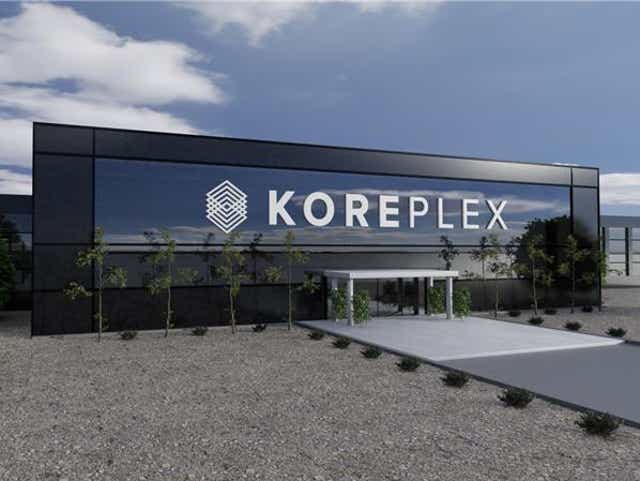A $500 million Koreplex Battery Manufacturing Plant will be built in the West Valley suburb of Arizona and will occupy upto 1 million sf of space, with a capacity of 12 gigawatt-hours of battery cell production, which is enough to generate power for 3.2 million homes per year.
The facility will be built by Kore Power Inc., a battery cell manufacturer based in Idaho who has decided to build its first lithium-ion battery manufacturing facility in Buckeye, Arizona.
According to the CEO of KORE Power, Lindsay Gorrill, Arizona was selected from among other states for the Koreplex Battery Manufacturing Plant due to its track record of supporting energy storage, its growing clean transportation sector, and availability of a workforce that could produce technology for their American-made batteries. Gorrill also gave other reasons for the site selection; he explained that the site’s location at MC 85 and Interstate 10, is ideal due its easy access to the interstate and the availability of an APS substation nearby. In addition, the site would also have a solar power setup where the building will store its own energy.
Gorrill said in a statement, “Arizona hit a home run. We’re fully committed to be a cornerstone of the state’s clean economy and we’re proud to bring advanced cell manufacturing home to the U.S.”
The Governor of Arizona, Doug Ducey, expressed his pleasure on Arizona becoming the base of the country’s first U.S.-owned lithium-ion battery manufacturing facility. He said, “Not only will this facility create thousands of new jobs, it will position Arizona as an anchor in the global battery manufacturing supply chain. We’re grateful to CEO Lindsay Gorrill and the entire KORE Power team for choosing our state. We look forward to partnering in your success for many years to come to further sustainability here in Arizona and around the world.”
Construction is scheduled to begin on the site by year end, with the goal of beginning production in the second quarter of 2023 which could result in creating employment opportunities for upto 3,000 people.
